



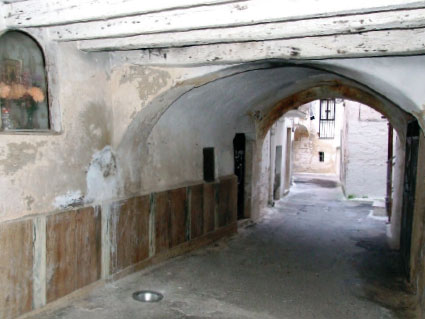
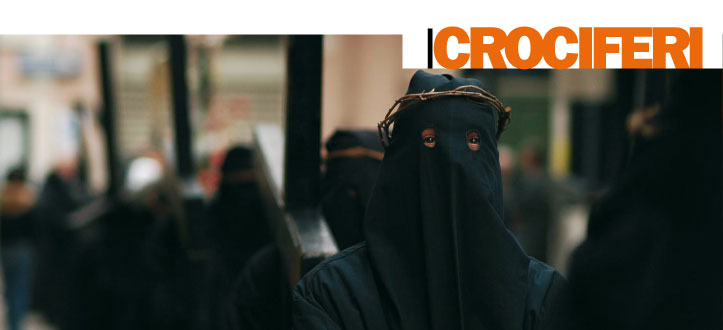
The crossbearers approach the “s-bbulcr” (the Holy Sepulchres in the various churches), moving up the nave of the church on their knees, after leaving the Cross at the door.
They then proceed to “discipline” themselves by whipping their forearms with the iron chains they drag through the streets attached to their ankles.
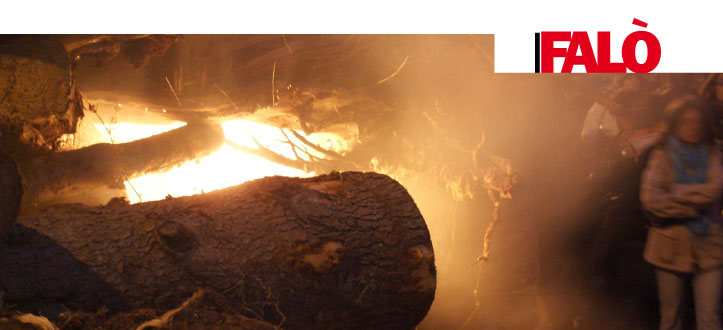
In front of the Church of Madonna della Lama during the night a lot of bonfires are burnt in order to favour a rich harvest. According to the evangelic symbolism, the bonfires should evoke the fire burnt in the praetorian atrium, where St. Peter before the cock crow denied Jesus’ name.
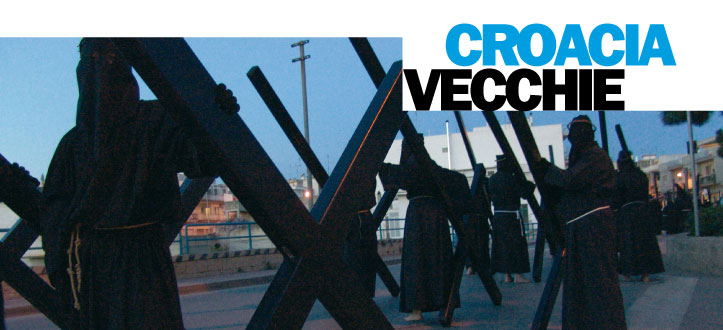
The so-called “Craocia Vecchie”, literally ‘old cross” is the oldest among the emblematic figures of the Cross-bearers. He still has the privilege to be followed by a small crowd of children carrying candles and torches.such a pricession evoke the procession following Jesus Christ in his journey from Caifa to Pilatus to be condemned.

The Holy week in Noicattaro is squeezed just in two days and therefore the religious people are forced to stressful rhythm to follow all the three processions that last many hours.The ‘Naca’, the sarcophagus of the Dead Christ, is carried in solemn silence interrupted only by the chains dragged by the eighty-five cross-bearers and by the pious women in mourning singing psalms and following the procession. In the local dialect the word ‘naca’, of Greek origin, means ‘cot’. The transposition of meaning may derive, first of all, from the shape of the coffin very similar to the shape of the cradles of the peasants’ houses and then may evoke the bearers’ rocking pace.
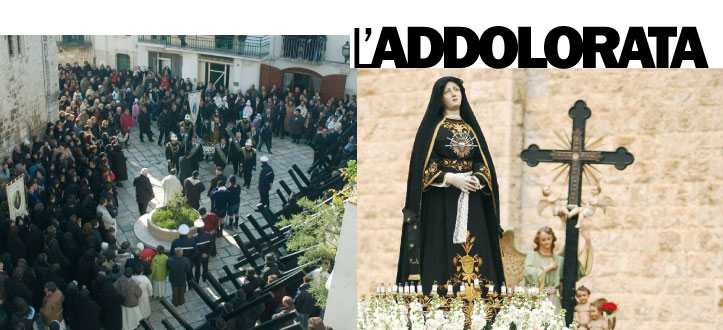
At two in the night, the statue of the Most Blessed Virgin of Our Sorrows is carried in procession, surrounded by the pious and mourning women, as the Virging was looking for her Son. A large crowd of believers follows the statue. Only thirty-three cross-bearers, as many as Jesus Christ’s years, have the honour to accompany the Dolorous Mother. This statue dates back to 18th and is one of the most beautiful of Noicattaro the realistic expression of the Virgin’s face.
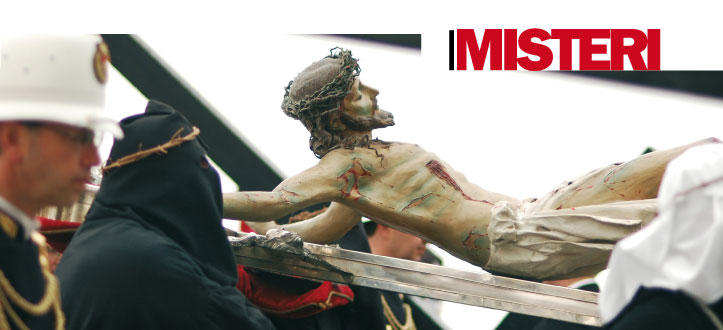
This is the last procession of the Holy week. It represents Jesus Christ’s passion with all the biblical characters who followed him to Golgotha. The procession that starts from the Church of Madonna della Lama is very long and silent.